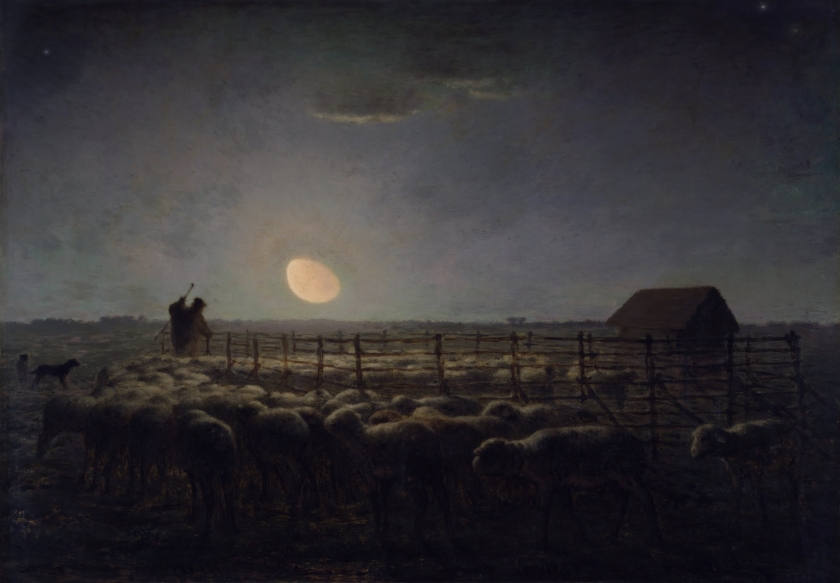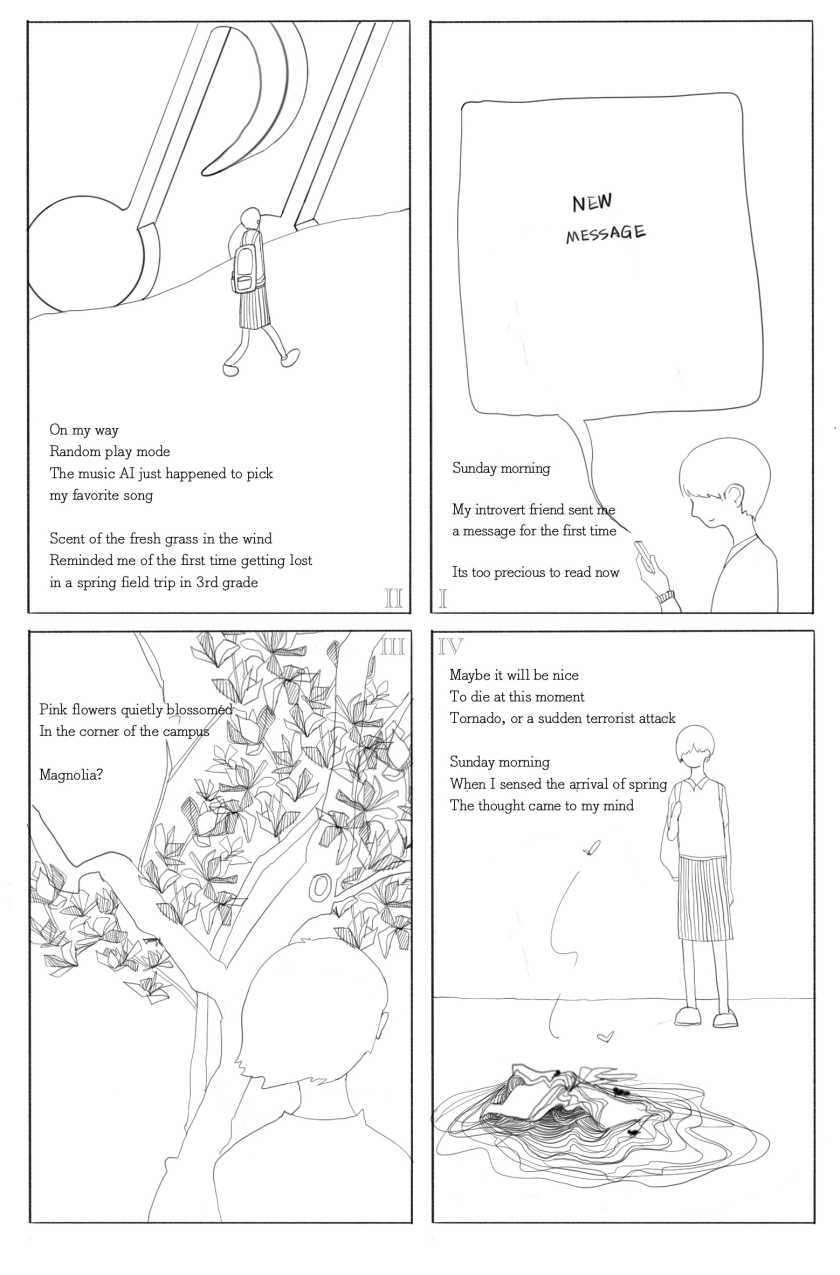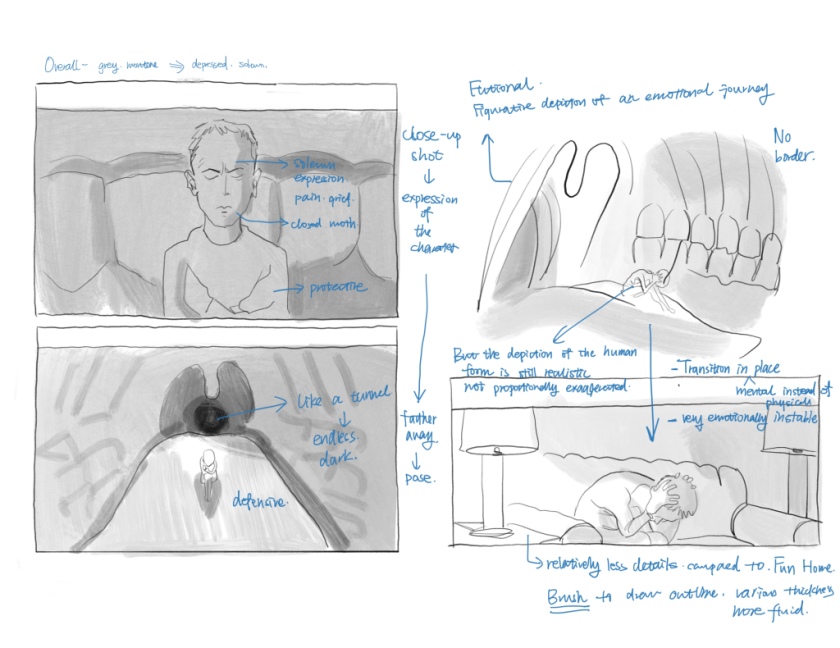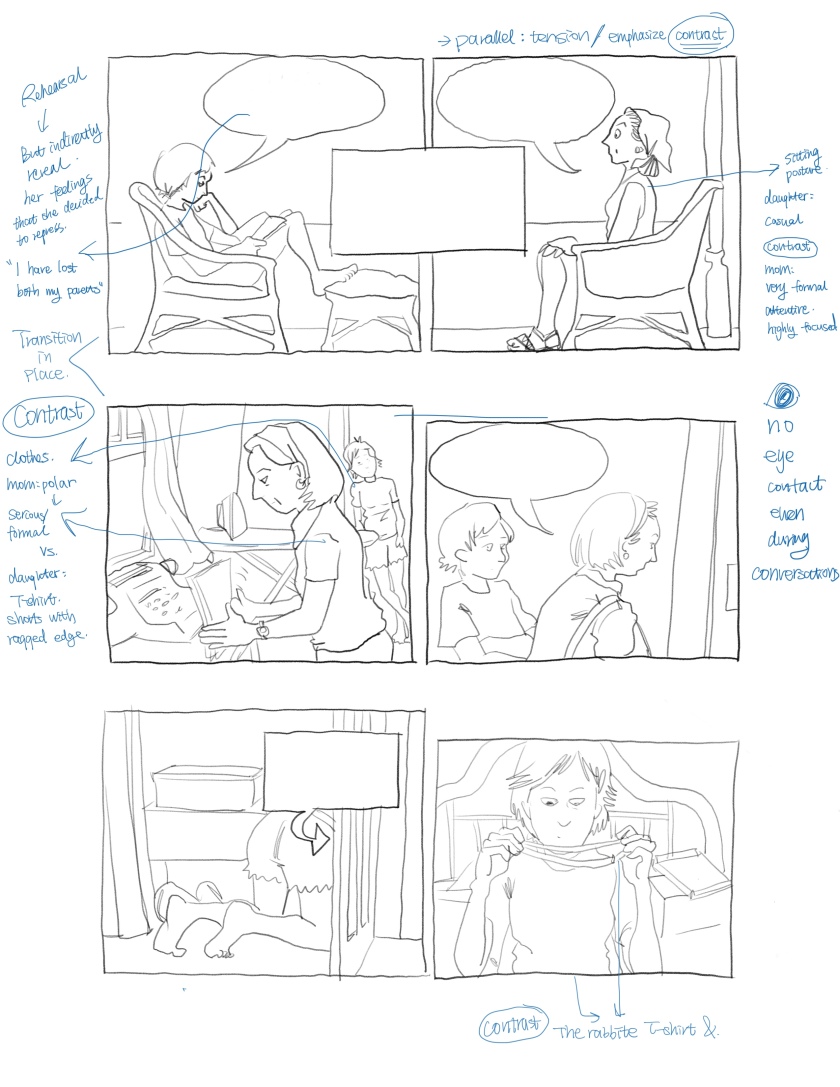Playlist for Reading

In this playlist, I included songs that help me stay focused. All the songs included in the playlist are instrumental with only two exceptions: one in the middle that serves as an intermission, and one as the ending. I try to make it more diverse as possible, but most of them have a melancholic, nostalgic, and calming quality —- like the painting I used as the cover, Jean-François Millet’s The Sheepfold, Moonlight.
Usually, I prefer to study in silence, especially when I’m working on assignments that require active engagement in thinking and “producing”, like writing essays or doing math homework. However, music becomes a necessary companion when I’m reading for a really long time or studying in a place where people are talking so I could stay focused.
List
さようならのうみー星野源 (sa yo na ra no u mi- hoshino gen)
- A pop-song writer and singer, but I found this instrumental work in his first album to be particularly loathing and serves perfectly well as an intro that naturally invites the audience into a dreamy world.
Nocturnes, Op.9 -No.1 in B-Flat Minor/ Chopin, Arthur Rubinstein
Nocturnes, Op.9 -No.2 in E-Flat Major/ Chopin, Arthur Rubinstein
Consolation No.3 / Franz Liszt, Vladimir Horowitz
- Some classics that always work to calm you down. I put them at the beginning of the list since it’s always much harder to transit into your working mode when you first sit down and begin to work.
年輪 - 朝川朋之(nenrin-asakawa tomouki)
- Incorporating traditional eastern instruments and sounds of nature, this piece always feels like a cooling breeze. Put it here after the three western classical pieces to refresh your mind.
おかえりー岡村孝子 (okaeri- okamura takako)
- Intermission—remind the audience to take a break. Nostalgic and cozy, this song always reminds me of the background music played in my kindergarten.
エトランゼ (Tanaya mix) – スピッツ (etoranza – Spitz)
- My favorite band of all time. This is one of their only instrumental songs. Even though I’m not a big fan of electronic music, this experimental piece has been miraculously effective in keeping me to stay focused and become productive, so I put it here as the first song in PART II.
Vampurity – 岩井俊二 (Iwai Shunji)
- One of the most famous Japanese movie directors, but also really good at composing. I realized that for me, melancholic songs are far more effective in bringing me into the mood of reading than merry ones, which is why this playlist might turn out to be quite sentimental and sorrowful.
After the Rain 日向敏文 (Hinata Toshifumi)
- As its title suggests, it’s an “after the rain” song. Light-hearted yet not so exciting that will disrupt my reading. Feels like someone joyfully jumping through the water paddles alone after heavy rain.
First Step – Peter J. Malmsjo
- A sad song again.
雨だれ – 坂本龙一 (Ryuichi Sakamoto)
- Probably one of the most popular Japanese composers. This particular piece is less well-known but I quite like it. Especially the opening.
Reflections – 日向敏文 (Hinata Toshifumi)
- A song that feels like “the last dance song before parting”.
Humming Water – 吉村弘 (Hiroshi Yoshimura)
- Lots of natural sounds, in particular, various sounds of water: dripping, flowing, rippling.
I Will – The Beatles
- The ending should be something cheerful and calming so that you could sum up the courage to launch another session of studying and tackle your problems.




